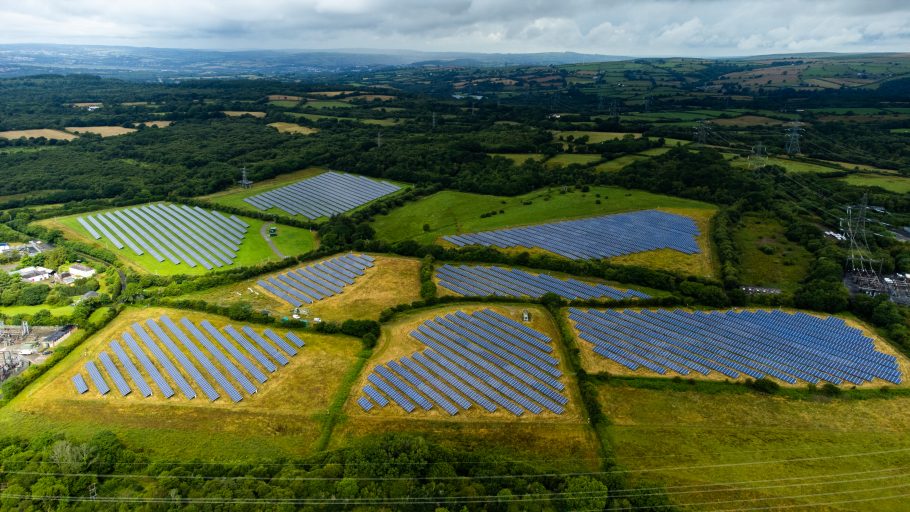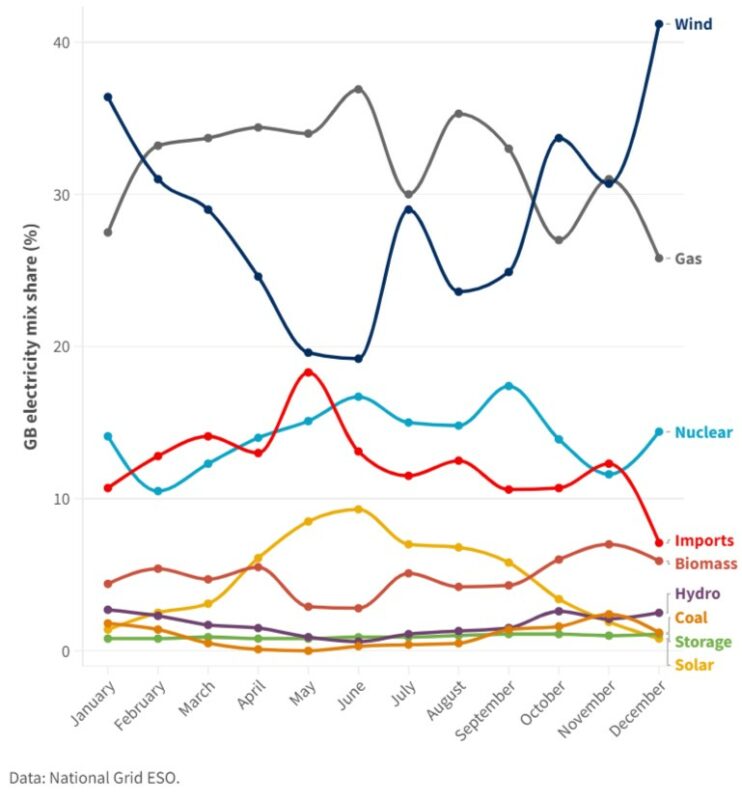
Using National Grid ESO’s monthly electricity statistics Solar Power Portal looks back on how solar contributed to Britain’s electricity mix throughout 2023.

Summer sun
Commenting on the electricity mix of 2023, National Grid ESO noted that Britain was “moving closer to our ambition of periods of zero-carbon operations by 2025.”
The highest solar output recorded in 2023 was on the 10 April at 10.97GW.
June 2023 saw the highest share the Britain’s electricity mix enjoyed by solar at 9.3%, closely followed by May which saw solar account for 8.5%.
As is to be expected, winter saw the lowest contribution made by solar in 2023 dropping to 0.8% in December.
On average solar produced 4.7% of the UK’s electricity throughout 2023. According to Carbon Brief solar generated 14TWh of electricity throughout the year.
Solar’s presence in Britain’s electricity mix is expected to grow in 2024 as Research by Rystad Energy, cited by Drax’s ‘Electric Insight’s’ quarterly report in December, showed that the rate of Britain’s solar installations had tripled in the last year, with 2.9GW of domestic and utility-scale solar installed between 2022 and September 2023 bringing Britain’s total to 18.1GW.
Rystad added that it expects UK solar capacity to superseed 25GW by 2025.
Steady storage
Energy storage maintained a steady presence in Britain’s electricity mix fluctuating between a share of 0.8% and 1.1%.
The need to increase the battery energy storage’s presence in our electricity mix was highlighted by Roger Hollies, chief technology officer at Arenko Group, following a fault on the IFA Interconnector between France and the UK on 22 December which caused a 49.2Hz frequency event leading to a loss of 2GW on the UK grid.
Hollies said: “there are a huge volume of batteries (over 4GW) ready and available to provide services. If enough frequency response was contracted from batteries this event could’ve been contained to the initial fault.”
Gas remains Britain’s primary energy source
Overall, gas produced the majority of Britain’s electricity for 9 months within the year, beaten only by wind in January, October and December.
December 2023 also saw the second lowest input from gas at 25.8%, almost half of the electricity produced by wind in the same month.
Contrarily June saw the the most gas-intensive electricity mix, with the fossil fuel producing 36.9% of Britain’s electricity, and the lowest input from wind at 19.2%.
Despite gas maintaining the majority of Britain’s electricity mix last year, recent analysis from Carbon Brief revealed that electricity generated by fossil fuels in 2023 fell by 22% year-on-year to the lowest level since 1957.
In total fossil fuels made up 33% of Britain’s electricity mix in 2023, 31% (98TWh) specifically made up by gas.
Carbon Brief attributed the decline of fossil fuels to two factors: renewables increasing sixfold (by 113TWh) from 2008, and reduced electricity demand, which decreased by 21% (83TWh) since 2008.
The 2023 electricity mix
Last year, saw one of Britain’s cleanest electricity mixes since 2015, with December 2023 being the 15th month in a row in which low-carbon generation produced more electricity than fossil fuels.
Overall low-carbon sources provided 51% of the electricity used by Britain last year, compared to 32% from gas.
The total electricity mix for 2023 is as follows:
- Gas: 32%
- Wind: 29.4%
- Nuclear: 14.2%
- Biomas: 5%
- Coal: 1%
- Solar: 4.9%
- Imports: 10.7%
- Hydro: 1.8%
- Storage: 1%
Part of this article was taken from our sister site Current±, the full piece can be found here.
Note: This article has been updated following National Grid ESO publishing its 2023 electricity review.

